 The beginning of a circle is also its end. Not I, but the world says it: all is one. And yet everything comes in
season.
|
||||||||||||||||
The circle was cast and the Elements were called in to protect the circle and to assist in ushering in the energy of Spring. A white candle was lit from the black one on the altar to represent the light half of the year taking power from the dark half. The black candle was then extinguished. Persephone, Goddess of Spring and Hermes, the Great Messenger of the Gods were then welcomed into our circle. "The earth is blessed with life on your return
At the conclusion of the meditation we all shared our insights and then we danced around the circle to celebrate the return of spring. Our hosts Persephone and Hermes were then thanked for their presence and guidance. The circle was closed and the residual energy was then grounded back into the earth and forwarded to individuals for healing. We all finished the evening with our usual feast. More information regarding this circle and past circles can be found in our Book Of Shadows. Our next Full Moon Circle will be held near Engadine on Friday September 24. Please contact us for further details if you would like to attend. Ostara & the Spring Equinoxby Jenwytch
Symbols of the Equinox include fertile animals such as the rabbit, as well as lambs, chicks and eggs - symbols of new life and new beginnings. Some people also like to include dragons which can be associated with eggs the earth and fertility. Colors of the season are soft green, white, and soft yellow. It is associated with childhood and new life. The first of the Spring flowers and fruits are brought to the altar and table. Some deities associated with the Spring Equinox are: The Maiden, Astarte, Aurora, Eostre, Eos, Ostara, Kore or Persephone (as the maiden), The Green Man, Ares, Mars, Attis, Adonis, Osiris, Narcissus, Hyacinth and Dionysus. Activities and rituals: planting, welcoming spring, coloring eggs, making/wearing new clothing, fertility rites, rituals of balance, herb work - magical, medicinal, cosmetic, culinary and artistic, spells for prosperity/fertility, new beginnings, potential, action. Ostara is a time of renewal and new beginnings, a time to plant your seeds and plan for future. Change is in the air and if you don't do it now, the year will creep in and you never will. This is the ideal time to clean your home, to Spring clean, get rid of the old and welcome in the new. It may not be easy, but some simple physical work and mental effort can be focused to rid your life and home of negativity, clear the problems of the past and provide for a brighter future. See more on this topic in a previous Axis Mundi at The Spring Equinox and Ostara. References:
|
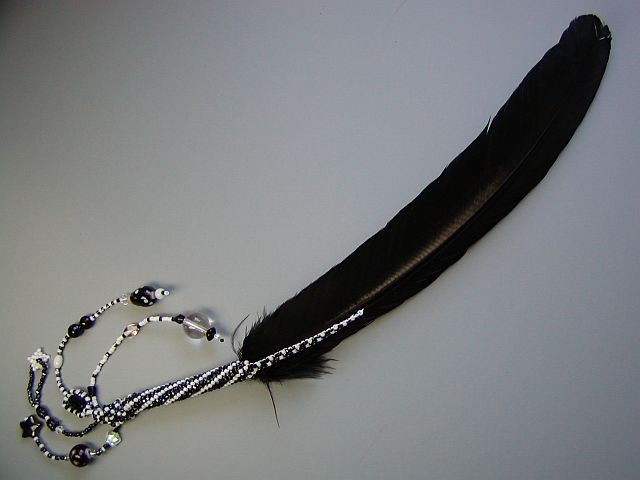 Click image to enlarge |
Bird feathers are symbols of the element of Air; they represent the mind and new opportunities. When you are collecting feathers as part of your tool kit it is always good magick to find them rather than buy them. Usually when your intent is to find a feather for your kit the right type of feather will eventually come to you.
Feathers in conjunction with smudging herbs can be used to energetically cleanse the aura and chakras of people, as well as environments, crystals and your shamanic tools. In healing and in rituals, feathers can be used as catalysts to help focus concentration while carrying out a particular intent.
Please note that the use of feathers in a ceremony also invokes the energy of the particular bird from which they originate, so be sure to understand the characteristics and the energy of the bird before using its feathers in ceremony or healing session.
by Janine Donnellan
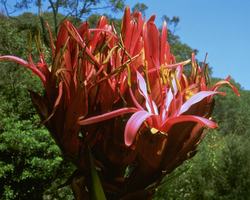 Spring has certainly sprung and my backyard is amass of colourful native flowers. I am most fortunate to have several Gymea Lily plants in my yard and the cockatoos are having fun bouncing on them and tearing them apart. The Gymea Lily is indigenous to the Sydney Basin and is truly an iconic plant of the Australian bush; it flowers during spring and summer. The botanic name, Doryanthes, derives from two Greek words - dory, meaning spear, and anthos, meaning flower - and this refers to the beacon like flower heads that stand out in the bush. This extraordinary plant bears large red flowers on a huge terminal head atop a stem of up to four metres high.
Spring has certainly sprung and my backyard is amass of colourful native flowers. I am most fortunate to have several Gymea Lily plants in my yard and the cockatoos are having fun bouncing on them and tearing them apart. The Gymea Lily is indigenous to the Sydney Basin and is truly an iconic plant of the Australian bush; it flowers during spring and summer. The botanic name, Doryanthes, derives from two Greek words - dory, meaning spear, and anthos, meaning flower - and this refers to the beacon like flower heads that stand out in the bush. This extraordinary plant bears large red flowers on a huge terminal head atop a stem of up to four metres high.
Aboriginal people roast the roots of this plant to make into a kind of cake, and the flower spikes when very young are also roasted and eaten. The leaves contain fibres which can be used for brush making and matting.
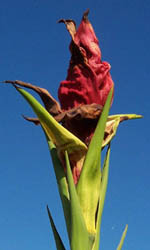
The Gymea Lily essence is for those who have high reaching goals and aspirations. The energy of the powerful large stem and flower within this essence assists them with their commitment to follow through. Rather than taking one step at a time these people often attempt to create faster and reach higher than they are able to. This essence will assist them in taking their energy back to within themselves, thus allowing them to temper their journey more gently.
The Gymea Lily essence is for commitment to stay true to yourself, and not be swayed by other people. It assists in reminding you of your own capabilities and not comparing yourself to others. Gymea Lily is also very beneficial for people whose personalities are very intense or extrovert, or those who are dominating, demanding and very charismatic who usually get their way. It is also for people who like to be seen and noticed and who seek glamour and status.
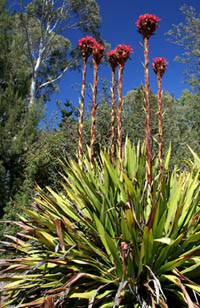
I believe in and stay committed to my own uniqueness creativeness
I hold my focus on my goals and aspirations
 Botanical: Lonicera caprifolium
Botanical: Lonicera caprifolium
Planetary Associations: Jupiter, Mercury
Element: Earth
Gender: Masculine
Tarot: The Heirophant, The Magician, Cups
Astrological: Cancer
Invocatory: Gwion, Bach, Ganesha, Orunmila, Oshun, Cerridwen
Magickal Classification: Herbe of Immortality, Religious Herbe, Visionary Herbe
Parts used: Flowers, Bark
Synonyms: Goats Leaf, Woodbine, Jin Yin Hua
 Honeysuckle (Lonicera species) is a plant with a sweet scent and rowdy disposition. Honeysuckle vines are easy to grow, vigorous, heat-tolerant, and nearly indestructible. The flashy and fragrant flowers will attract hummingbirds and butterflies all summer long. The resulting fruit of the Honeysuckle flower will provide a fall treat for your local songbirds as well.
Honeysuckle (Lonicera species) is a plant with a sweet scent and rowdy disposition. Honeysuckle vines are easy to grow, vigorous, heat-tolerant, and nearly indestructible. The flashy and fragrant flowers will attract hummingbirds and butterflies all summer long. The resulting fruit of the Honeysuckle flower will provide a fall treat for your local songbirds as well.
Wild British Honeysuckle was known as "woodbine" or "woodbind" because of its trailing habit. Shakespeare's "woodbine" is said to be morning glory.
The word "honeysuckle" has supposedly come from the honey sweet nectar so loved by pollinating hawk moths.
Folk legend recalls that parents once forbid their teenage daughters from bringing this plant into the home, as it was thought to induce erotic dreams. Another proverb says that if honeysuckle is brought into the house, a wedding will shortly follow.
Honeysuckle is used to enhance your spiritual sight. The best application of this herbe is obtained through using the extracted oil. Honeysuckle can increase your understanding of the images and impressions collected in the astral.
Honeysuckle is used in rituals designed to connect you with the mysteries of the Cauldron of Cerridwen.
Representing rebirth and the survival of life through the long winter's death, honeysuckle decorates the Eostara temple, representing the renewal of spring. When used in sabbat rituals the dried, powdered bark may be used as incense. Ring green candles with Honeysuckle flowers to attract money, they may also be added to sachets and charms.
In tree magick, the Honeysuckle encourages us to reach for those desires sought while remaining true to the values and beliefs held. The Honeysuckle will help you to tread safely. The sweet scent of the Honeysuckle signals joy in the search for the self.
An herb of many powers, honeysuckle is magically associated with sparking love or creativity, and encouraging a partner to remain faithful.
Honeysuckle will heighten psychic powers, especially clairvoyance, when burned or placed on the third eye (psychic centre in the middle of the forehead). It is also used for workings to encourage creativity, secure material objects, keep something secret, or improve the memory. Inhaling the fragrant flowers, along with visualizing the way you want your body to look, can help you lose weight, according to Scott Cunningham. Honeysuckle incense is used for determination, good health, prosperity, and tranquillity in the home. The plant is said to keep away thieves. It is also associated with immortality.
In the East Honeysuckle is used to treat fevers of colds, as an expectorant, an asthma remedy, and for dysentery and diarrhoea. Honeysuckle is used in many cosmetic fragrances. Caution: The berries of some Honeysuckles are toxic.
Energetics: cold, dry, bitter/sweet
Primary Actions: clears heat, alterative, immune stimulant, expectorant, diuretic, antispasmodic, strongly antiviral and antibacterial, anti-inflammatory, uterine stimulant, relaxant nervine, astringent, lymphatic
Primary organs: Stomach, lungs, liver
16 HONEYSUCKLE (Lonicera caprifolium)
- Living in the past, longing for the past -
For people who tend to live in the past or to hold on to the past, for instance after the loss of a partner or a pleasant job. They find it difficult to work through that past and let it go; they do not expect good things from the present or future. This is also a good remedy for homesickness and nostalgia.
 Crystals are beautiful, and most of us like to wear them, including me. So I decided to join a lapidary club in order to learn about cutting, polishing and setting stones so I could make my own jewellery. But there is more to it than just cutting and polishing etc as each stone needs to be treated differently due to its composition.
Crystals are beautiful, and most of us like to wear them, including me. So I decided to join a lapidary club in order to learn about cutting, polishing and setting stones so I could make my own jewellery. But there is more to it than just cutting and polishing etc as each stone needs to be treated differently due to its composition.
As we know, each crystal is different in its metaphysical properties, so the use of individual stones varies. The same applies to working on stones to produce a finished product. You need to take into account the stone's hardness, how it will suit a combined setting with other crystals, its lustre capacity, hardness etc.
In the case of hematite it needs to be burnished to produce a high lustre. Other crystals, mostly those with high iron content like hematite, need this process as well.
I have a few stones finished, meaning they are cut and polished but have not been set as yet. They will tell me what setting they want.
Settings for stones can be produced in a number of ways, for example: casting (using a wax mould); silver/gold setting ready made, or make your own. I tried casting in silver, but my first attempt failed due to too many air bubbles, so I melted the silver down and started again. My attempt at casting has been put on hold for now.
Ready made settings can be bought from a variety of companies. Stones are cut to fit the setting, generally not the other way round. My lapidary club members are very helpful and informative but at present we do not have classes as such. It's all about learning as you go and having access to the equipment which the club provides. Other lapidary clubs, generally larger ones, do have organised classes for their members.
As I said, the crystals tell me what setting they want, which has led me to study how settings are made so I can try to make my own. I did my first 'Silver Jewellery' course which introduced me to tools and techniques needed to work with silver. I learnt how to cut, solder and finally design simple rings cut out from a silver sheet. I am still working on mastering soldering and even the experts say that it takes a lot of practice and they don't always get it right the first time either.
The first course introduced me to silver but did not include the setting of stones. That was in the next course, 'Jewellery Making'. At the beginning of the class we were told what equipment we needed; silver in sheet, wire, solder, and blades etc. I already had files and sand paper (wet and dry) from the previous class. Right, I was ready to go! We were shown ring designs and given a choice of stones and I picked hematite. I absolutely love hematite. It is the only stone that I have more than a few pieces of in my collection. I now have a ring, necklace, earrings and bracelet all with hematite. I'm so happy to have a matching set. I didn't make all the pieces but I am proud that I finished the set off with the ring.
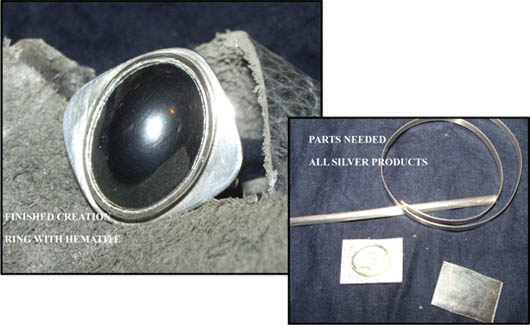
Hematite is a shiny, heavy stone that looks and feels very similar to metal. This is due to the fact that it is mostly made of iron oxide. Although hematite is very heavy, it has a hardness of five.
Its colours range from a brilliant shiny black and steel grey metallic to dark red or reddish brown with a red streak. The name hematite (Greek-blood) is derived from the fact that, when cut, the saw coolant becomes coloured red. In some countries it is also called bloodstone.
It is created from triangles; trigonal crystals radiate energy and are invigorating and protective, rebalancing the bio-magnetic sheath.
Hematite has been used throughout history. The ancient Egyptians used it as a calming agent in cases of hysteria. They also carved hematite into amulets and used it as an inscription stone for parts of the Book of the Dead. Native American folklore states that war paint made from hematite will make one invincible in battle. People in the eighteenth and nineteenth centuries wore hematite jewellery during mourning.
Hematite has been considered since ancient Greek and Roman times as a stone that protects the wearer. Its content is iron oxide. Because iron was traditionally associated with Mars, the Roman god of war, warriors used to rub their bodies with it before battle in the belief that it would protect them.
It is said to help heal the anger and hurt felt by those who are warriors in this life as well as those who were in a previous life who are facing karmic battles in their present life.
When polished, hematite has such a high sheen that long ago it was used as mirrors. This would make it a great scrying tool (black mirror) if you could find a piece large enough.
Hematite is very helpful in harmonizing the mind body and spirit and also for grounding. It removes excess psychic energies and is good for increasing intuition.
It is used during out of body journeying. It protects the soul and grounds it back into the body. Hematite is strongly yang in nature and balances meridians by correcting imbalances in the yin. It dissolves negativity and prevents negative energies from entering the aura, restoring peace and harmony to the body.
Hematite enhances survival capabilities, supporting timid women, boosting self-esteem, enhances willpower, reliability and imparts confidence. It deflects negativity and dispels fears.
Hematite reduces painful emotions and eases our reaction to stress. Its reflective quality symbolizes its ability to help deflect the emotions of others. It is calming and soothing. It can help those at a point of nervous exhaustion to find restful sleep.
Hematite boosts personal magnetism, so these stones are often worn in jewellery, making them very effective.
Known sometimes as the lawyer's stone, hematite will help with all legal wrangles or matters of injustice and is especially good for neighbourhood or boundary deputes. Bury hematite at the corners of your land or in pots at the four corners of your house to keep out all forms of malice, to guard against fire and reflect negativity back to the sender. Hematite helps you to come to terms with mistakes and to accept them as learning experiences rather than disasters. As mentioned, the stones help in legal situations. I have used it for this, and without a doubt in my mind it was very effective.
A "stone for the mind", Hematite stimulates concentration and focus, enhancing memory and original thought. It is a useful stone for overcoming compulsions and addictions.
Hematite restores, strengthens and regulates the blood supply, aiding blood conditions such as anaemia. It supports the kidneys and regenerates tissue. It stimulates the absorption of iron and formation of red blood cells. Treats leg cramps, anxiety and insomnia. Hematite aids spinal alignment and fractures. It can draw heat for the body. Use as an elixir for fevers.
Hematite should not be used where inflammation is present or for long periods of time.
Deities:
Hecate: Greek goddess of the three paths, guardian of the household, protector of everything newly born, and the goddess of witchcraft.
Mars: the Roman god of war. The month March (Martius) is named after him. As the god of war, many of his festivals were held in the spring, the beginning of the campaign season. He was a god of spring, growth in nature, and fertility, and the protector of cattle.
Hebe: In Greek mythology, Hebe is the goddess of youth (Roman equivalent: Juventas). Hebe was the cupbearer for the gods and goddesses of Mount Olympus.
Kali: An Indian deity often regarded as a dark, black and fierce goddess of death, and as the destructive "Power of Eternal Time". However, to her worshippers in both Hinduism and Tantra she is much more, and represents a multi-faceted Great Goddess responsible for all of life from conception to death.
Magical Use: Hematite is used to improve relationships. If you need your personal relationship to be better, carry a hematite with you always.
Hematite is said to be powerful in drawing illness from the body. As with all stones it is held in the hands while visualising, and then placed on the skin directly over the afflicted area. Hematite is worn for grounding and stabilizing purposes and to focus the attention on the physical plane.
Scrying: in a darkened room light a red candle. Settle before it and hold a large piece of hematite so that the candle's flame is reflected on it. Gaze at the reflection and visualise a question. The answer will come to you.
Hematite is good to counter fears of flying and to prevent jet lag.
Note: some books classify hematite as black stone others as silver/gray stone. Silver is the colour of the moon and the Moon Goddess, of mysticism, magick and clairvoyance. Use silver in spells for establishing natural cycles for fertility, for all moon, star and night magick, for increased financial good fortune, for bringing the unexpected into your life, for discovering the truth about a matter, for increased intuition and for women's magick of all kinds.
Use black in spells for endings, for banishing sorrow, guilt, destructive influences and or acceptance of what cannot be changed, for working within limitations and restriction, for mourning, for rebirth and for reducing chronic pain; also for blocking a negative or harmful force. Black is a ceremonial colour and is a strong symbol of transformation and rebirth as well as psychic protection. Black stones are extremely protective and are thought to entrap negative energies and neutralize them. They are also extremely efficient when it comes to detoxifying your body. Black and gray stones are linked to the planet Saturn while silver crystals are associated with the moon and the planet Mercury.
Chakra: Hematite, linked to the Earth, Base and Past life Chakras.
Element: Fire - inspiration and courage, willpower with stability, endurance and perseverance to see it through. (Earth element -Base Chakra).
Planet: Saturn, Mars, Mercury.
Zodiac: Aries and Aquarius
Numerical Vibration: 9
Depending on source associations do differ.
 This month's article relates to the outer planets in our Solar system, and the significant role they have played in modern Astrology. The planets referred to are Uranus, Neptune and Pluto, and while Pluto is relegated to the status of a dwarf planet nowadays, there is no denying that its presence in a chart - be it an individual or country - has a telling effect on the long term situation in question. Therefore, the opinion of those relatively few astronomers who relegated Pluto really hasn't changed its use in a natal chart (or horoscope) at all.
This month's article relates to the outer planets in our Solar system, and the significant role they have played in modern Astrology. The planets referred to are Uranus, Neptune and Pluto, and while Pluto is relegated to the status of a dwarf planet nowadays, there is no denying that its presence in a chart - be it an individual or country - has a telling effect on the long term situation in question. Therefore, the opinion of those relatively few astronomers who relegated Pluto really hasn't changed its use in a natal chart (or horoscope) at all.
In modern Astrology, the 10 main planets used (we include the Sun and Moon, even though they are really luminaries which light up our skies) are clustered together on the basis of its closeness and distance from the Sun:
Personal Planets - We have the Sun and Moon, Mercury, Venus and Mars in this group, because these planets are about our personal growth and early development, along with our earliest interactions with those others in our immediate realm. The Moon is the fastest mover in the natal chart, taking 29.5 days in its synodic cycle, thus allowing it to move into a new sign each month of its cycle - for example, a new Moon. The Sun is the next fastest, moving within all the 12 zodiac signs. It takes 12 months before it reaches its starting point in a natal chart, which is what's called a solar return, or our birthday. Mercury takes roughly the same amount of time, but in this planet's case, we allow for its retrograde motion for three weeks at a time, four times a year. Venus becomes slightly slower, taking about 13 or so months before returning to its original point. Mars takes approximately two years before its return.
Interpersonal Planets - Jupiter and Saturn fall in this group, as they deal with the long term future goals, and worldview. In Jupiter there is the focus on philosophy and networking within the wider community, along with looking at the bigger picture in the generalised scheme of things. Jupiter is one of the planets which takes a longer period of time to complete its return in a chart - approximately 12 years. Saturn's focus is on public recognition, form, structure and authority, along with the laying of strong foundations for a solid future. Saturn's return takes approximately 29 years and is the last of the aforementioned planets that can be seen with the naked eye in the sky.
Transpersonal Planets - The three more recently discovered planets of Uranus, Neptune and Pluto are regarded as transpersonal because of the time each one takes to move in each sign. Another term used by their movements is generational and this is appropriate, since they take such a long period of time to move between generations of people. Uranus is about change, inventions and genius, eccentricity, uprisings and a general disregard of the status quo. As Uranus takes around seven years to move within each sign, its eventual return takes 84 years.
The next planet to move even slower is Neptune, which is introspective and spiritual, can delve into the world of fantasy, delusion and deception. Depending on its orbital rotation, Neptune can take anywhere between 13-17 years in a sign, completing its eventual return in just over 165 years. The final planet, and currently the furthest away, is Pluto, which is about transformation, mainly through tearing down and rebuilding. Pluto has a rather eccentric orbit, taking anything from 12 years as it did in the sign of Scorpio to 25 years in Cancer. During the period of 1983-1995, when Pluto was in Scorpio, it was actually orbiting in front of Neptune - the last time it has done so. Its complete return takes around 248 years.
The three outer planets were discovered at crucial times in our modern history and the time of those discoveries have set the tone for their meanings - at least archetypically. First sighted by the mathematician and astronomer Galileo in the 1600s, Uranus was overlooked perhaps as something else and wasn't to be formally discovered until 1781 by German-born British astronomer Sir William Herschel. At the time of Uranus' discovery, the ideas of equality and human rights, freedom and democracy were being realised. The discovery also coincided with the Romantic movement in art and literature, with freedom of expression being recognised. During the period of 1781-89, there were political insurgencies and uprisings. Two of the more notable examples were when the Americas were given independence from the British crown in 1783, along with the French revolution in 1789. So it is from these two momentous uprisings that we can understand how it ties in with freedom and equality, questioning the governing authority and seeking to break away from it. A lot of modern Astrologers gives Uranus' rulership to the sign of Aquarius, co-ruling with the traditional planet of Saturn, presiding over the 11th house, and it is with this sign that it can be seen to have the need for freedom of expression and a deep interest in humanitarian values and causes.
Neptune's discovery came about in 1845, after astronomers Urbain Le Verrier and John Couch Adams (in Paris and Cambridge respectively) began to separately calculate in order to determine its nature and position. It was first observed through a telescope on 23rd September 1846, by astronomer Johann Galle in Berlin. At the time of Neptune's discovery, it has been linked with the rise of nationalism in European nations like Germany, Italy, Hungary, Ireland and Serbia. These nations wished for independence based on the ideals of socialism. Karl Marx and Friedrich Engels published their work The Communist Manifesto in 1848. It also coincides with the time of illicit drug use - especially that of opium in the far east for the purpose of recreation - the discovery of anaesthetics and the use of hypnotism to probe the mind. It ties in with the more severe disorders of neuroses and paranoia, especially with the prolonged use of drugs. We must also consider that during this particular generational movement, the founder of the Theosophical Society, Madame Helene Blavatsky, came into her own as a psychic of repute - whether famously or infamously. She is credited with the New Age movement that is in place around the world today. In modern rulership, Neptune is assigned to the 12th house, and is a co-ruler with Jupiter over the sign of Pisces.
The final outer planet discovered was Pluto, and its discovery was shrouded in controversy. Percival Lowell, the founder of the Lowell Observatory in Flagstaff, Arizona, began an extensive search into a possible ninth planet, which he named Planet X. In the years to follow, there was a legal battle in the continued search for Planet X, instigated by Lowell's widow Constance, who wished to have Lowell's portion of the observatory for herself. Research eventually resumed in 1929 and the movements of the planet was summarised by Clyde Tombaugh in the beginning of 1930. Pluto was confirmed as a planet on 13th March 1930. At the time of this discovery, Wall Street experienced its worst ever stock market crash on 29th October, 1929. This crash brought about the Great Depression, which affected millions of people worldwide. Due to the onset of extreme poverty and displacement, the seeds were sewn for National Socialism - or Nazism - in Germany and the meteoric rise of Adolf Hitler. Fascism in Italy was slower in its stride as a force to be recognised, but eventually they joined forces with Germany and Japan to form the Axis alliance. At the eventual opposite end of this alliance was Stalinism in the Soviet Union. Power, greed and corruption, along with dictatorships were sure to ensue, along with organised crime and enforced prohibition of the sales of alcohol. This was to be the precursor for World War II, and the final nail in the coffin when Nazi Germany stormed Poland on 1st September 1939, forcing both Great Britain and France to declare war on Germany and their allies. So began this period in history which saw annihilation and destruction, fuelled by propaganda and nationalist pride. Mass murder was common, as were courage and tenacity under the most trying circumstances. It was this courage that allowed the survivors to rebuild and begin anew after the war's end on 15th August 1945, when the Japanese announced their surrender after the atomic bomb was dropped onto Nagasaki in Japan. It is a fitting example of death and rebirth. In modern rulership, it is assigned to the 8th house of death, another person's property and assets. It is co-ruler over Scorpio with the traditional ruler of Mars.
From this perspective, it is interesting in how archetypes are used to describe Astrology. When the outer planets are used to delineate a chart, they are looked at over a longer period of time, because each of these planets move very slowly. In particular with Neptune and Pluto, their movement is less than 1 degree a year - half of that time at least is spent in retrograde. A retrograde movement is usually spent in thought and introspection, tapping into the more unconscious realms of the mind, body and spirit of either on an individual or world view. Many generations of people are born with all three of these planets in retrograde, but it would be a misnomer to suggest that it has any significance to the individual whose chart is being delineated. Rather, it is more about what's happening in terms of social movements for the masses.
However, when personal planets form an aspect in a natal chart with these transpersonal planets, then the astrologer would pay close attention in regards to how that plays out for an individual. When the outer planets form aspects in transit, the astrologer would also take into account the longer term situation and its possible outcome.
On that note, and until next month, fare thee well.
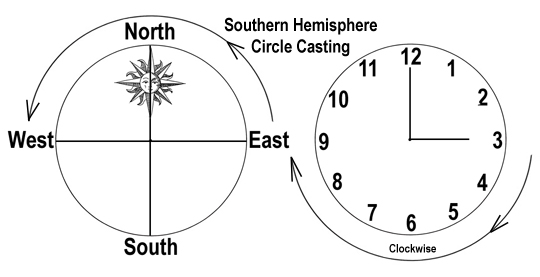 Confusion sometimes arises about the direction in which a sacred circle should be cast in the southern hemisphere. It is now generally accepted by the Pagan communities of Australia that the seasonal festivals be adjusted by 6mths in comparison with the northern hemisphere -- eg. our Spring Equinox and associated festivals occur in September as opposed to March in the northern hemisphere -- so it makes sense that we might also adjust our circle casting accordingly, to suit local conditions.
Confusion sometimes arises about the direction in which a sacred circle should be cast in the southern hemisphere. It is now generally accepted by the Pagan communities of Australia that the seasonal festivals be adjusted by 6mths in comparison with the northern hemisphere -- eg. our Spring Equinox and associated festivals occur in September as opposed to March in the northern hemisphere -- so it makes sense that we might also adjust our circle casting accordingly, to suit local conditions.
 The first painting below is of the Brisbane skyline on a normal Queensland sunny day. All straight edges, bright, light and airy. With the sun shining on the river and not a cloud in the sky.
The first painting below is of the Brisbane skyline on a normal Queensland sunny day. All straight edges, bright, light and airy. With the sun shining on the river and not a cloud in the sky.
As in life, when you paint you go through stages - Light and Dark, Bright and Cloudy. Usually there is another painting waiting in the wings to follow, or another day ahead (be it good or bad).
I must say my very first painting was of the normal bowl and jug, with the standard colour wheel by my side. Now that lasted for one painting, then I threw it away (how much normality can one stand?). The next few were along the standard design and colours, but things do move along as I have said.
 1. "Brisbane" (Click to enlarge) I repainted quite a few using red and black to highlight "normal" everyday scenes. Needless to say my relatives and friends thought I had gone over to the "Dark Side". Little did they know that my progression was just hitting its straps. This second painting (right), which was done a considerable time after the first, is of the Glastonbury Tor. When Amethyst and I visited we were both taken by its energy, history and well, its general feeling of presence. I have in a previous edition of Axis Mundi (April 2010) gone over the details of the Tor. Both paintings have similarities and differences, both have buildings and structural design, there is foreground (or waterground) and the sky. There is good and bad in both. But to me the Tor looks more alive, it has seen so much and still stands tall. |
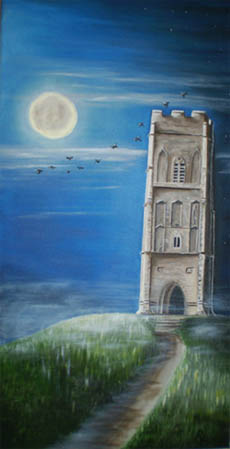 2. "Glastonbury Tor" (Click to enlarge) |
By no stretch of the imagination will I say I am a good painter. But when I paint they (the paintings) talk to me, and over the last few years they talk even louder and more insistently than ever before. So when I start painting, until I stop it surprises me what turns out. So either I am going mad, or it's a natural progression. Or is natural progression going a bit mad!
Rayvensclaw







... plus much, much more!




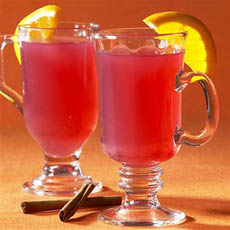
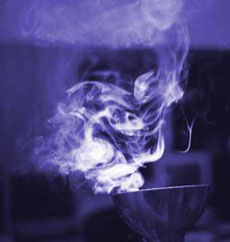
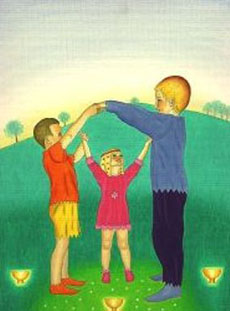


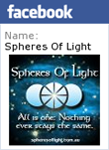 |
 |
|
 |
 |